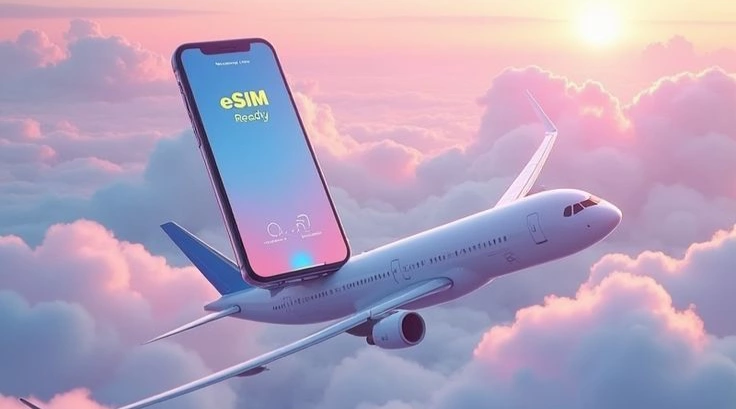Family Travel Posts on Crowch
Every year on October 4th, taco lovers across the United States — and increasingly, around the world — come together to honor one of the most iconic dishes ever created: the taco. While people enjoy tacos year-round, National Taco Day is a chance to celebrate not just the food itself, but also its history, diversity, and the sense of community it brings.
A Journey Through History
The story of the taco begins in Mexico, where it has been a staple for centuries. Historians believe the word “taco” may have originated from the Spanish term for “plug” or “wad,” a nod to the way food was wrapped inside tortillas. In the 18th century, Mexican miners reportedly used the term to describe small, folded tortillas filled with food, much like paper-wrapped gunpowder charges used in the mines.
Originally a working-class street food, tacos became a beloved part of Mexican daily life, sold at markets and by street vendors. When Mexican immigrants brought tacos to the United States in the early 20th century, they quickly gained popularity — first in border towns, and later across the entire country. Today, tacos are enjoyed globally, with endless regional and creative variations.
The Many Faces of a Taco

One of the reasons tacos have such universal appeal is their versatility. The tortilla — whether corn or flour — is a blank canvas for an almost infinite range of fillings. Traditional favorites include carne asada, carnitas, al pastor, and grilled fish. For vegetarians and vegans, there are countless plant-based fillings, from seasoned beans and roasted vegetables to jackfruit or tofu.
Toppings are equally varied — fresh cilantro, chopped onions, creamy guacamole, tangy salsa, pickled vegetables, shredded cheese, and a squeeze of lime all add to the explosion of flavors. Every taco is a unique balance of textures: soft tortilla, tender filling, and crisp garnishes.
How People Celebrate National Taco Day

National Taco Day has grown into a fun, flavorful holiday for all ages. Restaurants and food trucks often create special menus, offering discounts or limited-edition tacos with unique flavor combinations. Social media becomes flooded with taco photos, recipe videos, and polls about the “best taco ever.”
Many people celebrate at home, hosting taco nights with friends and family. These gatherings are an opportunity to experiment with new recipes, try different tortillas, or set up a “taco bar” where guests can build their own creations. Some communities even organize taco festivals, complete with music, cultural performances, and contests for the most creative taco.
A Cultural Symbol
Beyond its taste, the taco represents cultural heritage, creativity, and togetherness. It’s a dish that tells a story — of tradition, adaptation, and the blending of flavors across generations. Its ability to be customized for different diets and tastes makes it a meal that truly welcomes everyone to the table.
Whether you love your tacos spicy or mild, soft or crunchy, filled with meat, seafood, or vegetables, National Taco Dayis a perfect excuse to enjoy this timeless favorite. And perhaps, as you take that first bite, you’ll be reminded that food isn’t just about eating — it’s about sharing, connecting, and celebrating life.
In 2025, F1 Fan Festivals return with more cities, more excitement, and more ways for fans to connect with the world of Formula 1 — without ever stepping foot on a racetrack. These free public events transform city streets into open-air celebrations of speed, sound, and F1 culture.
What Is an F1 Fan Festival?
It’s a Formula 1 experience held in major global cities, featuring:
- Live show runs of F1 cars on city streets
- Meet-and-greets with drivers and team members
- Autograph and photo sessions
- Interactive exhibits and race simulators
- Fan challenges, games, and giveaways
- Live music and performances from top artists and DJs
Cities are turned into full-scale fan zones — with engine roars, tire smoke, and passionate supporters everywhere.

F1 Fan Festivals 2025 Calendar (preliminary):
- Tokyo, Japan — April (before Japanese GP)
- Miami, USA — May (during Miami GP week)
- London, UK — July (before British GP)
- São Paulo, Brazil — November (leading up to the Americas finale)
- Dubai, UAE — December (during season finale)

Why Attend a Fan Festival?
For thousands of fans, this is a first-time chance to:
- Hear the sound of an F1 car live
- Try racing simulators and challenge real lap times
- See historic championship-winning machines
- Feel the energy of a paddock — without a race ticket
Fan Festivals are free to attend, family-friendly, and filled with unforgettable moments that bring fans closer to the sport they love.
On May 25, 2025, Formula 1 returns to the streets of Monte Carlo for what is widely regarded as the sport’s most prestigious and glamorous event — the Monaco Grand Prix. Nestled in the luxurious principality between sea and mountains, this legendary race is where motorsport meets aristocracy, and perfection behind the wheel is the only way to win.
A Circuit Like No Other
The Circuit de Monaco is a challenge of pure skill. With narrow streets, blind corners, unforgiving barriers, and virtually no runoff areas, it tests every aspect of a driver’s ability. There is no room for error — and no place to hide. Even a minor misjudgment can end a weekend instantly.

- Track length: 3.337 km
- Race distance: 78 laps
- Highlights:Turn 6 – Loews Hairpin: The slowest corner in F1Tunnel section: A sudden change from light to dark at high speedRascasse & Anthony Noghes: Where many races are won — or lost
- Turn 6 – Loews Hairpin: The slowest corner in F1
- Tunnel section: A sudden change from light to dark at high speed
- Rascasse & Anthony Noghes: Where many races are won — or lost
Overtaking here is incredibly difficult, so grid position becomes everything. Qualifying day in Monaco is arguably the most exciting session of the entire F1 calendar.

What Makes 2025 Special
The 2025 Monaco GP is expected to be one of the most unpredictable in years, thanks to several key developments:
- Charles Leclerc, Monaco’s hometown hero, still seeks redemption after multiple years of heartbreak at home. Can he finally break the curse and win in front of his people?
- Max Verstappen enters the weekend as a favorite, but the tight Monaco layout doesn’t always reward power — precision is key.
- Lewis Hamilton, now in red with Ferrari, aims to add another Monaco win to his legacy — and reassert himself in the title hunt.
- Oscar Piastri, in his first Monaco drive for Red Bull, is eager to prove himself on the world’s most unforgiving stage.
- Carlos Sainz, leading Audi’s debut season, will look to show that the new team belongs in the spotlight — even in Monaco.
A Tactical Masterpiece
With the 2025 regulation updates — including tier-2 active aerodynamics, enhanced hybrid deployment, and real-time tire degradation sensors — teams will be forced to adapt their race strategies in real time. Pit stops, tire selection, and timing are more critical than ever.
Monaco often features unexpected drama: late safety cars, undercut strategies, and even rain can flip the running order instantly.
Monaco: More Than a Race
Beyond the racing, the Monaco Grand Prix is a cultural phenomenon. It’s the only event where the grid walk is as star-studded as the winner’s podium. Royalty watches from balconies, billion-dollar yachts line the harbor, and global brands compete for visibility.
But beneath the glitz and glamour is a brutal, technical street race — one that demands perfection, courage, and nerves of steel.
Winning in Monaco is not just about points. It’s about etching your name into Formula 1 history. Only the greats have conquered Monte Carlo — and in 2025, a new legend may rise.
After a six-year absence, the Chinese Grand Prix is finally back on the Formula 1 calendar. On April 20, 2025, the world’s fastest cars will return to the Shanghai International Circuit — a modern classic that has been missed by drivers, fans, and teams alike. This race marks not only a geographical expansion but also a symbolic comeback for one of F1's most important markets.
A Historic Comeback
The last Chinese Grand Prix was held in 2019. Since then, the event has been repeatedly postponed due to COVID-19-related travel restrictions and logistical hurdles. Its return in 2025 signifies more than just another date on the schedule — it's a statement of global recovery and Formula 1’s renewed commitment to growth in Asia.
China is not only a key player in global motorsports development, but also home to millions of fans. And for the first time since his debut in F1, Zhou Guanyu — China’s first and only Formula 1 driver — will finally get the chance to race in front of his home crowd. It will be an emotional and potentially career-defining moment.
The Shanghai International Circuit

Opened in 2004 and designed by famed track architect Hermann Tilke, the circuit quickly became a driver favorite. Its unique layout provides a great mix of technical corners and overtaking opportunities, including:
- Turn 1 – a long, tightening right-hander that demands precision and control.
- A 1.2 km back straight – one of the longest in F1, ideal for DRS and high-speed battles.
- Heavy braking zones – especially into Turn 14, perfect for last-minute overtakes.
The track also has a reputation for changing conditions. Sudden rain showers or varying temperatures can turn strategy upside down, making it a real challenge for teams.
Storylines to Watch in 2025

- Zhou Guanyu’s home debut: After several seasons in F1, Zhou will finally feel the full energy of racing in China. Expect huge crowd support and extra motivation from the young driver.
- Red Bull vs Ferrari: The title fight is expected to remain fierce. With Max Verstappen, Oscar Piastri, Lewis Hamilton, and Charles Leclerc all capable of winning, Shanghai could be a turning point.
- Audi F1's progression: The newcomer team will face another serious test on a technical, demanding circuit. Carlos Sainz will look to impress early in the season.
With rule changes introduced in 2025 — like smart tire sensors, second-level active aerodynamics, and more powerful hybrid units — the Chinese Grand Prix will also serve as a perfect benchmark for how teams adapt under race pressure.
More Than Just a Race
The event will feature full fan zones, corporate showcases, and a renewed focus on fan engagement. Sponsors will return in force, and Formula 1 will use the opportunity to strengthen its presence in China through educational, commercial, and cultural activations.
This is not just about racing — it’s about reconnecting with a passionate audience and rebuilding a vital link in the F1 world tour.
On March 9, 2025, the Albert Park Circuit in Melbourne will host the opening round of the Formula 1 World Championship. This weekend will be more than just a season opener — it will mark the beginning of a new chapter with updated rules, major driver transfers, and ambitious team debuts.
Albert Park: The Heart of Australian F1
Set around a picturesque lake, Albert Park is known for its mix of fast straights and technical corners. Drivers need maximum focus, while engineers must find the perfect compromise between downforce and straight-line speed.Melbourne’s spring weather is notoriously unpredictable — blazing sunshine can turn into rain within minutes, often producing chaotic and exciting races.
Season Storylines

- Red Bull Racing fields Max Verstappen alongside Oscar Piastri, who will make his home debut for a top team.
- Ferrari starts the year with Lewis Hamilton and Charles Leclerc battling for supremacy inside the Scuderia.
- Audi F1 makes its first-ever Grand Prix appearance, with Carlos Sainz aiming for a strong debut.
Rule changes — including active aerodynamics, improved hybrid systems, and smart tire wear sensors — will influence race strategies from day one.
What to Expect

The first race of the season is always full of surprises. Teams are still learning how their cars behave under real race conditions, and weaknesses may appear unexpectedly.The start-finish straight and the opening corners at Albert Park are prime spots for drama, while late safety car deployments are common, adding more twists.
Why It Matters
Winning in Australia brings more than just 25 points — it delivers a psychological boost. A strong start can set the tone for a title campaign, while an early setback might force a long fightback.
Traveling across Europe doesn’t have to be expensive. Thanks to low-cost airlines, you can fly between countries for less than the price of a restaurant meal. Tickets from €10–20 are real — if you know where, when, and how to book them.
Low-cost carriers reduce prices by removing extras. A standard ticket doesn’t include checked luggage, meals, or seat selection. Everything is optional and comes at an extra fee. But in return, you get access to extremely cheap fares, especially if you book early.
Some of the most popular budget airlines in Europe are Ryanair, Wizz Air, easyJet, Vueling, Transavia, Eurowings, and Norwegian. Each has its own focus: Ryanair flies widely across the continent including to smaller airports, Wizz Air targets Central and Eastern Europe, and easyJet focuses more on domestic routes in France, Germany, Italy, and the UK.
To save money, book 4–6 weeks in advance. The cheapest tickets often appear on weekdays, especially Tuesday and Wednesday. Use flight comparison tools like Skyscanner, Momondo, or Google Flights to find deals — but book directly on the airline’s website to avoid hidden fees and access exclusive offers.
Be aware that most low-cost carriers limit free cabin luggage. Usually, you’re only allowed a small bag (about 40×25×20 cm) that fits under the seat. Standard cabin bags or checked luggage must be paid for separately. Also, check the airport you’re flying from — Ryanair, for example, often uses secondary airports located far outside the city, which may add time and cost to your journey.

Extra fees can also apply to things like seat selection, priority boarding, an additional personal item, or even printing your boarding pass at the airport. Always read the fare rules before purchasing to avoid surprises.
That said, with a smart approach, low-cost airlines are a fantastic way to explore Europe. For example, a route like Berlin – Budapest – Milan – Barcelona – Paris can cost just €60–80 total if booked a month or two in advance. These prices make travel accessible even for students or those planning spontaneous weekend trips.
Flying with low-cost carriers is all about flexibility and attention to detail. Packing light, bringing your own snacks, and flying at less convenient hours can save a lot. But if you’re prepared for this, Europe becomes more affordable — and closer — than you ever expected.

Staying connected while traveling used to be expensive and inconvenient. Now, eSIM technology makes mobile connectivity abroad faster, easier, and often cheaper. But how does it actually work in foreign countries — and is it the right option for your next trip?
🔹 What is eSIM?
An eSIM (embedded SIM) is a digital version of a SIM card built into your smartphone, tablet, or smartwatch. Instead of inserting a physical SIM, you download a cellular plan directly to your device by scanning a QR code or using a mobile app. Most modern phones — like iPhones from XR and newer, Samsung Galaxy S20 and up, Google Pixel models, and others — support eSIM.
🔹 Why Use eSIM When Traveling?
✅ Instant Activation: You can purchase and activate an international or local data plan before your trip — no need to hunt for SIM cards at the airport.
✅ Lower Costs: Local eSIM plans are often far cheaper than international roaming from your home carrier. Many options offer unlimited data or generous packages starting from just a few dollars.
✅ Multiple Networks: With dual SIM capability, you can keep your regular number for calls and messages while using the eSIM for mobile data abroad.

✅ Easy Management: Apps like Airalo, Holafly, Ubigi, and Nomad let you browse, purchase, and install eSIM profiles for 190+ countries. No physical delivery, no paperwork — everything is digital.
✅ Better Privacy & Security: You avoid handing over your passport or personal data to kiosk sellers in unfamiliar locations.

🔸 Things to Consider:
- 🌐 Check Compatibility: Not all phones support eSIM, and not all carriers or countries offer eSIM plans. Make sure your device is unlocked and eSIM-ready.
- 🚫 Country Restrictions: In some countries (e.g., Turkey or Egypt), you may need to register your phone’s IMEI number or face limitations on data usage after a certain period.
- 📶 Coverage & Speed: Quality of connection may vary. In remote areas, an eSIM may not offer better speeds than local SIM cards.
- 🔄 One-Time Use: Some eSIMs cannot be reinstalled if deleted. Always save your QR code and login info in a secure place.
🧳 Best Practices for Travelers:
- Compare Plans Before You Fly: Check apps or websites for the best eSIM deals in your destination country.
- Install While on Wi-Fi: Always activate your eSIM in a place with stable internet (e.g., your hotel or home) before relying on it abroad.
- Use Dual SIM Smartly: Route data through the eSIM while keeping your regular number active for calls, WhatsApp, or 2FA messages.
- Read Reviews: Look at user experiences for specific eSIM providers. Some are great for speed; others focus on affordability.
Using an eSIM while traveling is one of the smartest tech upgrades you can make. It eliminates the hassle of buying a local SIM, avoids roaming charges, and gets you connected instantly — all from your phone.
If you travel frequently or just want a smoother arrival in a new country, eSIM is worth trying. The freedom to stay online wherever you go is just one scan away.
✈️📱💡
Renting a car in Europe is not just about getting from point A to B — it’s a way to explore the continent with maximum freedom. While trains and buses are bound by fixed routes and schedules, having your own vehicle allows you to create a custom itinerary, stop wherever you like, visit small villages, discover national parks and scenic backroads — all at your own pace.
Europe’s road network is among the most developed in the world. Well-maintained highways, picturesque rural roads, excellent signage, and modern infrastructure make driving a comfortable experience, even for those who are new to traveling behind the wheel in a foreign country. In many European nations, traffic rules are strictly followed, drivers are courteous, and road signs are easy to understand — especially in Germany, Austria, France, the Netherlands, and the Nordic countries.
Renting a car is simple and accessible — you can do it at the airport, train station, or in the city center. Popular platforms like Rentalcars, DiscoverCars, and EconomyBookings, along with international companies such as Hertz, Sixt, Europcar, Avis, and Budget, make it easy to book online. You can choose the car category, transmission type, insurance, and additional options (such as a child seat, GPS, or Wi-Fi). Prices vary depending on the country, season, rental duration, and insurance coverage. In some countries — like Italy or Portugal — car rentals are especially budget-friendly.

The greatest advantage of traveling by car is the freedom to design your own route. You can explore the wine regions of France, drive through the lakes of Slovenia, tour the Croatian coastline, or head into the Alps while stopping in authentic mountain villages. A car is particularly useful for families, travelers with large luggage or sports equipment, and those who want to change plans spontaneously without being tied to public transport schedules.
However, there are rules to keep in mind. Each country in Europe has its own traffic laws, toll systems, and regulations. Some countries use vignette systems (Austria, Czech Republic, Switzerland), while others have pay-as-you-go toll booths (Italy, France, Spain). Be aware of restricted traffic zones in historic city centers (such as Italy’s ZTL zones). Parking is often limited, expensive, and strictly controlled. Traffic fines are usually charged automatically to the renter’s credit card.
Insurance is another key consideration. Basic coverage is usually included, but often comes with a high deductible. Many travelers prefer full insurance with zero excess for peace of mind. It’s also important to check whether cross-border travel is allowed — some rental companies have restrictions or additional fees for driving into neighboring countries.

Exploring Europe by car offers a sense of independence you won’t find on group tours. It brings you closer to the land, lets you watch landscapes change before your eyes, stop at viewpoints, or discover restaurants away from the tourist zones. It’s a way to travel consciously, flexibly, and comfortably.
If you value independence, want to create your own route, go beyond the main cities, and are ready for some light preparation — renting a car is the perfect solution. Europe was made for road travel, and a rental car gives you access to it all, without limits.
ntercity bus travel is one of the most popular and efficient ways to explore Turkey. This vast and diverse country offers hundreds of destinations — from the bustling metropolis of Istanbul to the Aegean resorts, from the fairy chimneys of Cappadocia to the Mediterranean coast of Antalya. While the railway network is limited in some regions, buses form the backbone of domestic transport in Turkey.
Turkish intercity buses stand out for their high level of service, often surpassing their European or post-Soviet counterparts. Most vehicles feature spacious seating, air conditioning, onboard entertainment systems, USB ports, and — most impressively — complimentary onboard service. On many buses, passengers are served tea, coffee, water, juice, and light snacks at no additional charge. Each vehicle typically has a steward (muavin) responsible for assisting travelers and ensuring a pleasant journey.
One of the key advantages of bus travel in Turkey is the frequency of departures and easy ticket availability. From almost any city, travelers can find multiple departures daily to virtually every corner of the country. Large cities have central bus terminals (Otogar) that serve dozens of destinations. Tickets can be purchased online via carrier websites, travel apps, aggregators, or directly at the bus terminal. Fares are generally affordable, making bus travel an attractive option for budget-conscious tourists.

Some of the most reputable intercity bus companies include Metro Turizm, Pamukkale, Kamil Koç, Varan, and Ulusoy. Each company offers different levels of comfort, service, and route coverage. Metro Turizm is one of the largest and most widespread operators, known for its online ticketing system. Pamukkale offers business-class buses and upgraded onboard amenities. Kamil Koç has a strong reputation for punctuality and reliability.
Most buses depart according to a fixed schedule and make planned rest stops at roadside cafés or service stations, allowing passengers to eat and stretch their legs. These breaks are especially appreciated on long-haul routes such as Ankara–Van or Istanbul–Diyarbakır, which can last 12 to 18 hours. Overnight buses are also common, helping travelers save time and avoid paying for an extra night of accommodation.
The comfort of bus travel in Turkey is enhanced by the country’s well-maintained highway system. Wide roads, regular speed checks, and frequent rest areas make the journey safe and pleasant. Unlike in some other countries, buses in Turkey are not considered a last resort — they are a respected and widely used form of transport for all demographics.

Traveling by bus not only connects you to major tourist hubs but also opens the door to lesser-known and culturally rich regions like Trabzon, Gaziantep, Konya, Mardin, and Erzurum. Often, the journey between destinations becomes a highlight itself, offering insight into Turkey’s geographical and cultural diversity — from landscapes to languages, from regional cuisine to customs.
If you're looking to experience the real Turkey, understand its daily rhythm, and save money while traveling comfortably, intercity buses are an excellent choice. They offer a reliable, affordable, and surprisingly comfortable way to see the country without missing a single turn.
Train travel is one of the most popular and comfortable ways to explore Europe. The continent’s extensive railway network connects major cities, small towns, and even remote regions. A train journey is not just a means of transport — it’s part of the experience: an opportunity to enjoy scenic landscapes, avoid the stress of airports, and travel at a pace that allows for both comfort and immersion.
Europe offers a wide range of routes, from high-speed trains that cover vast distances in just a few hours to regional lines where the journey itself becomes the highlight. High-speed services like TGV, ICE, Eurostar, Thalys, and Frecciarossa link cities such as Paris and London (in just 2.5 hours), Madrid and Barcelona (around 2.5–3 hours), or Milan and Rome (a bit over 3 hours). These trains often compete with flights in terms of total travel time, but they far exceed them in convenience, with central stations and minimal boarding procedures.
For slower, more atmospheric trips, regional train lines are a perfect choice. These routes pass through less-touristy but equally beautiful cities and villages — particularly in Switzerland, Austria, Italy, and Scandinavia. Scenic trains like the Glacier Express, Bernina Express, and Golden Pass have become world-famous thanks to their breathtaking Alpine views, lakes, vineyards, and mountain valleys. They’re ideal for travelers who value nature and a relaxed pace.
Train travel is also an environmentally responsible option. Rail is considered one of the most sustainable modes of transport in Europe. The EU continues to invest heavily in railway infrastructure, expanding both daytime and overnight services. Many routes that were once closed are being revived, including popular night trains linking major cities. For example, the Austrian Nightjet service now connects Vienna, Berlin, Paris, Amsterdam, and Rome.

For those planning to visit multiple countries, passes like Interrail (for European residents) or Eurail (for non-Europeans) offer a great solution. These passes allow unlimited travel within a certain number of days across dozens of countries. It’s a convenient option for flexible, spontaneous itineraries that don’t require rigid planning.
Another advantage of rail travel is the simplicity and comfort of the experience. There’s no need to arrive two hours in advance, pass through airport-style security, or pay for checked baggage. Many trains provide free Wi-Fi, power outlets, spacious seats, café cars, and dining compartments. In countries like Germany, France, and Spain, passengers can enjoy family zones, bike spaces, and even designated quiet areas.
Of course, train travel also has its nuances. Tickets for high-speed routes are often cheaper when booked in advance. During peak travel seasons, especially summer, trains can sell out quickly. In some countries — including Italy, France, and Spain — a seat reservation may be required even if you hold a rail pass.
Still, traveling Europe by train remains a reliable, safe, and enriching way to discover the continent. Unlike flying, trains allow you to feel the transition between regions — to see changes in architecture, language, and landscape unfold right outside your window. It’s a journey where the ride itself becomes part of the adventure.

If you’re looking for a perfect balance of speed, comfort, and memorable experiences, Europe’s railway network has everything you need — all in one ticket.
Спросить ChatGPT